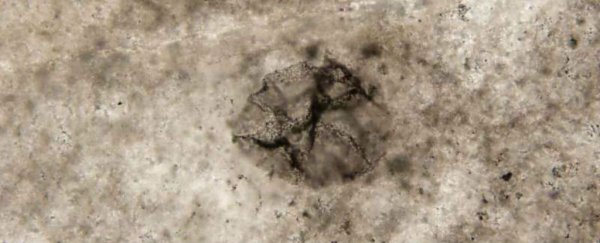Fossilised bacteria have been uncovered in two separate locations in South Africa, and they've been dated to 2.52 billion years ago - long before oxygen started to saturate Earth's atmosphere.
Instead of thriving in oxygen, like the trees and multicellular organisms that came after them did, these bacteria oxidised sulphur to survive, suggesting that life could be sustained on a planet with less than one-thousandth of a percent of Earth's current oxygen levels.
The fossils were uncovered in a layer of hard, silica-rich rock in the Kaapvaal Craton of the Limpopo Province in South Africa - one of the two remaining areas in the world where Earth's crust from 3.6 to 2.5 million years ago is still accessible.
The sulphur-oxidising bacteria they revealed were "exceptionally large", according to the University of Cincinnati team that uncovered them, indicating that these life forms had no problem living in the absence of oxygen.
"These are the oldest reported fossil sulphur bacteria to date," says one of the researchers, Andrew Czaja.
"And this discovery is helping us reveal a diversity of life and ecosystems that existed just prior to the Great Oxidation Event, a time of major atmospheric evolution."
For those of you who missed that chapter in high school science, the Great Oxidation Event describes a critical period in Earth's early history where the global population of cyanobacteria - photosynthetic algae that produce oxygen as a waste product - exploded, forcing oxygen to build up in the atmosphere for the first time.
This period, which has been dated to somewhere between 2.5 and 2.2 billion years ago, marked the rise of cyanobacteria, but has also been referred to as Earth's first mass extinction.
Scientists widely believe that before Earth was saturated in oxygen, the oceans were filled with anaerobic bacteria - bacteria that metabolise their food without the need for oxygen or sunlight.
Once Earth's atmosphere became flooded with oxygen during the Great Oxidation Event, it was like the bacteria were literally respiring poison, and they dropped like flies.
But there's one problem - there's been very little direct evidence of these anaerobic creatures until now.
"These fossils represent the oldest known organisms that lived in a very dark, deep-water environment," says Czaja. "These bacteria existed 2 billion years before plants and trees, which evolved about 450 million years ago."
The fossils, which were found at five different sites in two locations several kilometres apart, have preserved great numbers of bacteria that the researchers say are similar to those from the modern genus Thiomargarita - organisms that live in extremely low-oxygen, high-sulphur, and deep-sea environments today.
"These early bacteria likely consumed the molecules dissolved from sulphur-rich minerals that came from land rocks that had eroded and washed out to sea, or from the volcanic remains on the ocean's floor," says Czaja.
Because of the lack of direct evidence of these creatures in Earth's early history, it's not yet clear how or when they first arose.
But the team says that these fossils now give us the first clear indication that they existed at least 2.52 billion years ago - and that should give us hope for finding simple life forms on planets without an Earth-like abundance of oxygen.
"[T]hese fossils tell us that sulphur-oxidising bacteria were there 2.52 billion years ago, and they were doing something remarkable," says Czaja.
The research has been published in Geology.
